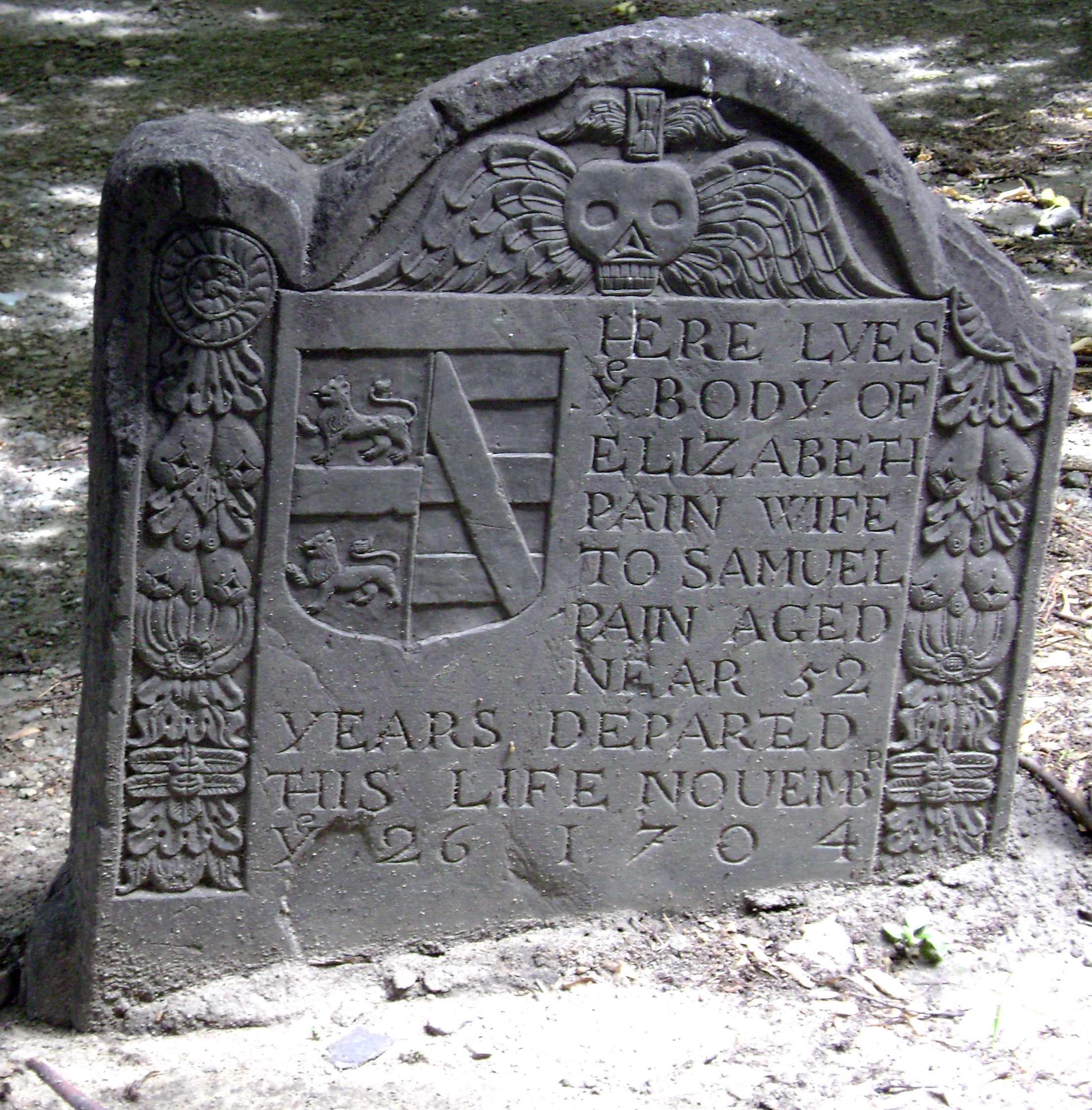Not long ago I was meandering around downtown, trying to kill some time, when I decided to check out King's Chapel Burying Ground, one of two historic cemeteries in the middle of Downtown Boston that I have never visited. I strolled around, the morning sunlight breaking through the branches high above me, when I stumbled upon this gem of a tombstone, marking the grave of the long deceased Elizabeth Pain. If you're at all like me, you would currently be asking yourself in a puzzled, quizzical, inner-workings-of-your-head voice, "Who?"

At first glance it's nothing special to see. Half sunk into the ground, this tombstone is one of the smaller ones in the cemetery, and could easily be passed over as nothing special. But upon reading the nearby signage, I learned an interesting factoid of literary history.
Re-confirmed by Wikipedia, I found out that this gravestone is allegedly the influence for Nathaniel Hawthorne's description of Hester Prynne's burial location, in one of the most metal novels of nineteenth century American Romantic fiction, The Scarlet Letter.
So said Hester Prynne, and glanced her sad eyes downward at the scarlet letter. And, after many, many years, a new grave was delved, near an old and sunken one, in that burial–ground beside which King’s Chapel has since been built. It was near that old and sunken grave, yet with a space between, as if the dust of the two sleepers had no right to mingle. Yet one tomb–stone served for both. All around, there were monuments carved with armorial bearings; and on this simple slab of slate—as the curious investigator may still discern, and perplex himself with the purport—there appeared the semblance of an engraved escutcheon. It bore a device, a herald’s wording of which may serve for a motto and brief description of our now concluded legend; so sombre is it, and relieved only by one ever–glowing point of light gloomier than the shadow:— “ON A FIELD, SABLE, THE LETTER A, GULES”If you look closely on the burial stone, you can see the formation of a capital letter A on the right hand side of the shield, next to the two lions. Some argue that the A is a mere coincidence, and that's just what Elizabeth Paine's family escutcheon looked like. I must say that I probably agree, but either way it's pretty badass to think the Nathaniel Hawthorne was maybe once looking at the same tombstone as me while coming up with the ending to his most famous novel.
No comments:
Post a Comment